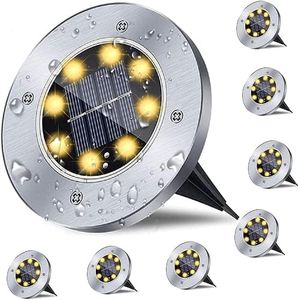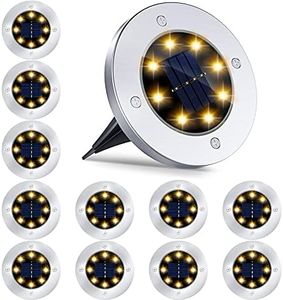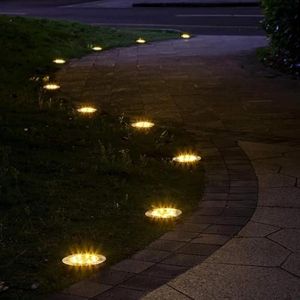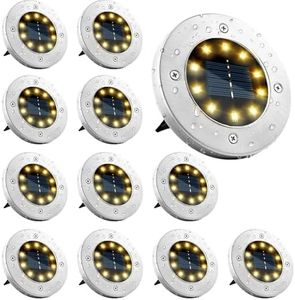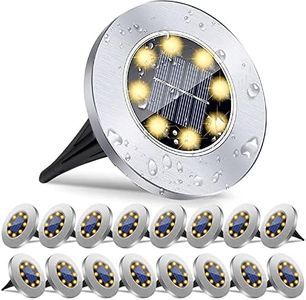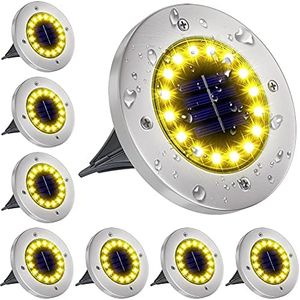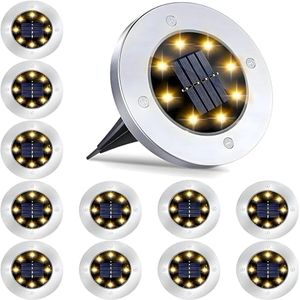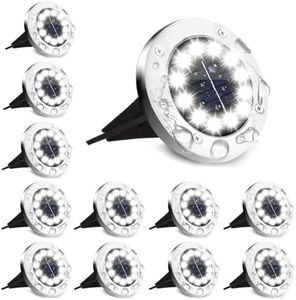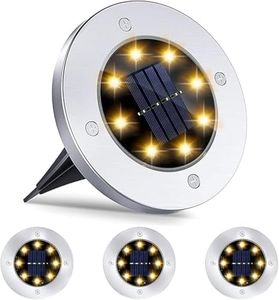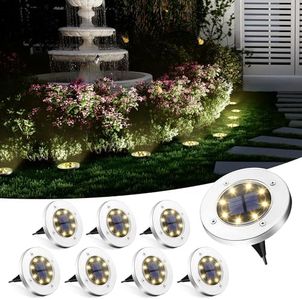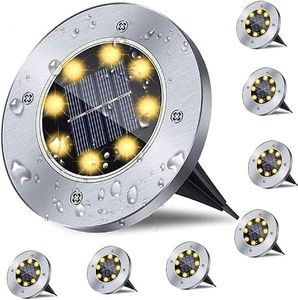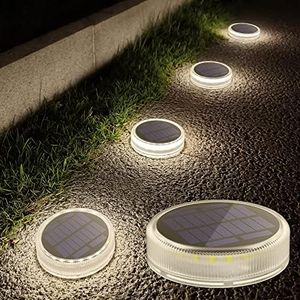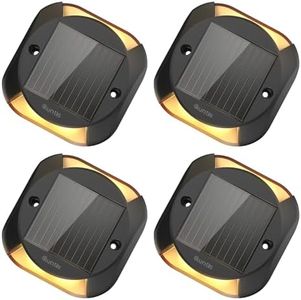We Use CookiesWe use cookies to enhance the security, performance,
functionality and for analytical and promotional activities. By continuing to browse this site you
are agreeing to our privacy policy
10 Best Solar Ground Lights
From leading brands and best sellers available on the web.Buying Guide for the Best Solar Ground Lights
When choosing solar ground lights, it's important to focus on your specific outdoor needs and the features that will give you the best experience. Solar ground lights are a fantastic way to light up pathways, gardens, or driveways without running power cables or raising your energy bill. The right choice depends on where you'll install the lights, how much sunlight the area gets, and what kind of lighting effect you want to achieve. Knowing how to interpret the main features will help you pick lights that are reliable, durable, and provide the brightness you need.Brightness (Lumens)Brightness is measured in lumens, which tells you how much visible light the ground light gives off. This is important because it determines how well your path or area will be illuminated at night. Lower-lumen lights (10-20 lumens) are best for decorative or ambient lighting, giving a soft glow; mid-range (20-50 lumens) fits for lighting up pathways clearly; higher (50+ lumens) is good for spots that need stronger light for safety or visibility. Pick the brightness based on whether you want to mark a path gently or clearly light a space for safer walking.
Battery Capacity & Working TimeSolar ground lights store sunlight in their batteries during the day to power the LEDs at night. Battery capacity and working time together show you how long the light will last after a full charge, which affects reliability through the night. Shorter durations (4-6 hours) work where full darkness isn't an issue, while longer durations (8-12 hours) are better for places that need to be lit all night long. Think about how late you want your space illuminated to decide which fits you.
Waterproof and Weather ResistanceSolar ground lights are used outside, so it's crucial that they handle rain, snow, and dirt. This is measured by the IP (Ingress Protection) rating, often starting with 'IP' followed by two numbers (for example, IP65). The higher the numbers, the more protected the lights are. Low ratings mean basic water splashes, while higher ratings can withstand heavy rain and even being sprayed with water. Pick a rating based on your local climate—higher for frequent rain or snow, lower if you’re in a mild, dry area.
Material QualityThe material used for the casing of your solar ground lights affects how tough and long-lasting they are. Plastic lights are lightweight and handle occasional bumps, but can wear out faster under harsh weather. Stainless steel or aluminum offer more durability and are usually a better choice where lawn equipment or foot traffic is likely. Choose sturdy materials for high-traffic or exposed areas, and lighter ones for decorative, safe spots.
Installation Type & EaseSolar ground lights can be installed differently—some are pressed into the soil, others may sit on a hard surface. The ease of installation matters if you plan to move or adjust the lights often. Simple push-in designs are great for soft soil or garden beds; fixed-base designs work better on patios or driveways. Think about where you’re placing the lights and how securely they need to stay put to decide the best style.
Charging TimeCharging time is how many hours of sunlight the light needs to reach a full charge. This is important if your installation area doesn't get strong sunlight all day. Shorter charging times mean the light is more efficient, while longer times need full sun exposure to work well. If you have a shady yard or live in a place with shorter winter days, look for models with fast charging capability.
Lighting Color and EffectsSome solar ground lights offer different lighting colors, like cool or warm white, or even colored LEDs that change for festive looks. This feature affects the mood your lights create—cool white gives a crisper, security-focused effect, while warm white feels cozy. Colored options are perfect for decoration or special events. Decide which color matches your outdoor vibe or intended use, whether safety, entertaining, or simple garden beauty.
